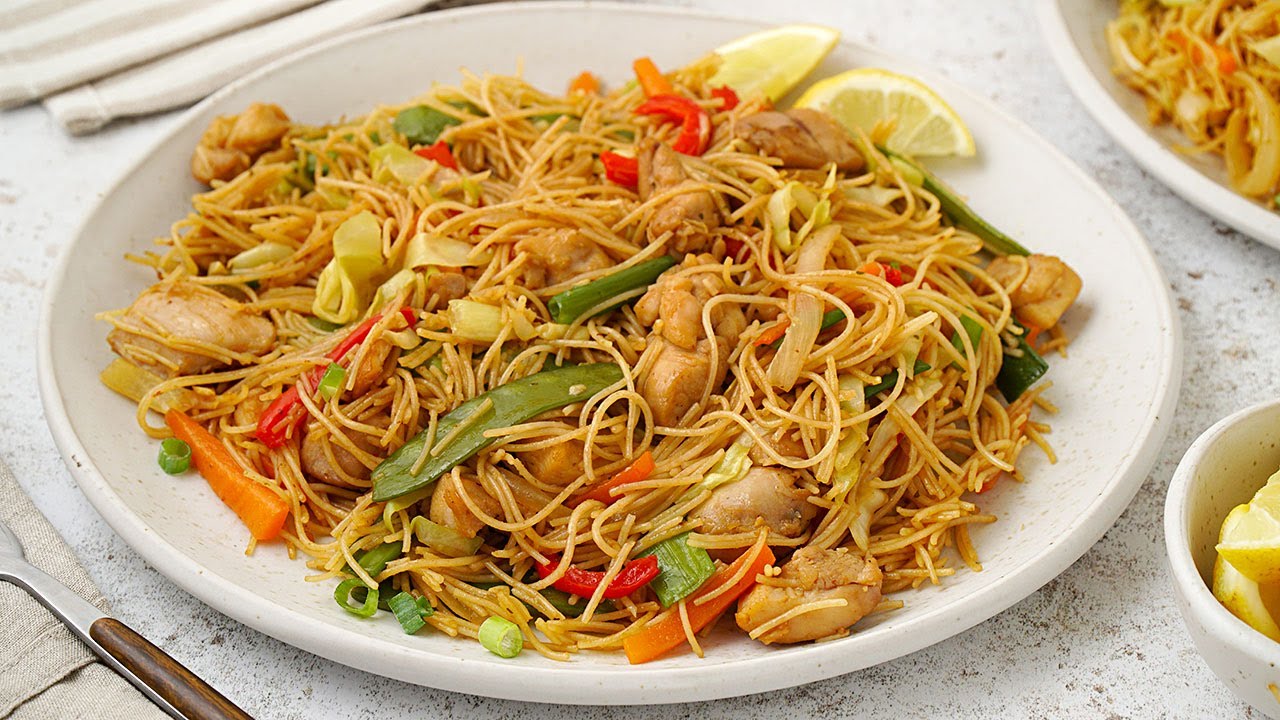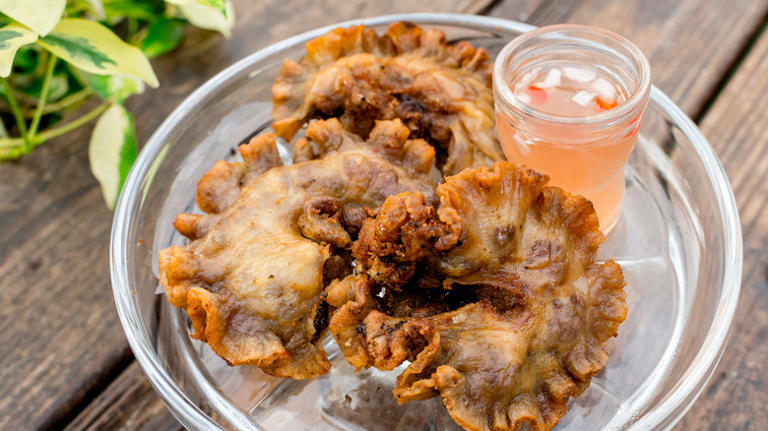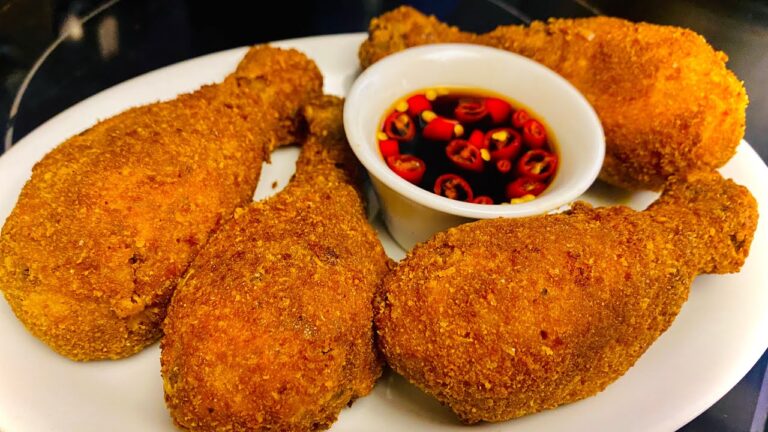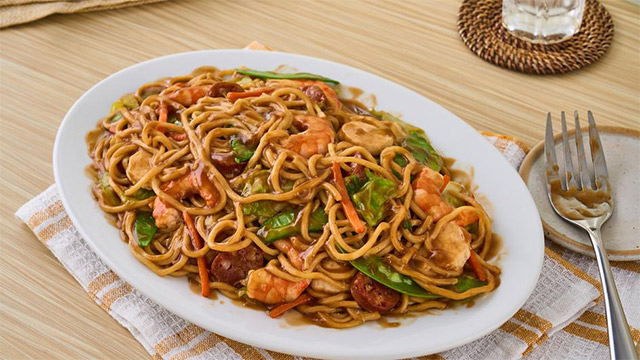Bihon Guisado: 30-Minute Filipino Noodle Escape
A tasty rice noodle dish called pancit bihon, also known as pancit guisado, is typically served with rice but can also be eaten as a main meal. Many times, people mistakenly believe that Bihon Guisado and Miki-Bihon Guisado are two distinct names for the same foods. The fact that Ambers Menu lists both dishes separately indicates that they are, in fact, two distinct dishes.
The primary distinction lies in the use of just Bihon noodles in this recipe, as opposed to Miki-Bihon Guisado, which calls for the use of both Bihon (rice noodles) and Miki (egg noodles) noodles. This recipe, which calls for rice noodles together with veggies and meat (chicken or pork), falls under Amber’s Pancit menu area. Like many other Pinoy delicacies, this one was also brought to the Philippines by Chinese immigration. This delicious dish is typically served during outdoor celebrations and on birthdays. We’ll show you how to make this delicious dish at home and satisfy your palate in this post.
Serving options and price on Amber menu:
| Serving Size | Price | Calories |
|---|---|---|
| Single Order | ₱ 60.00 | 200 KCal. |
| 3-5 Persons | ₱ 370.00 | 700 KCal. |
| 6-10 Persons | ₱ 620.00 | 1500 KCal. |
| 11-15 Persons | ₱ 730.00 | 2300 KCal. |
| 16-20 Persons | ₱ 840.00 | 3300 KCal. |
| 21-25 Persons | ₱ 950.00 | 4000 KCal. |
Looking to cook stir-fried Bihon Guisado at home?
It doesn’t take long to cook pancit bihon, also known as bihon Guisado. From preparation to serving, cooking this dish takes less than one hour. Cook the protein first, then the veggies, then the stock or broth, and last the dried noodles. Make sure the noodles are well tossed once they have softened and absorbed the liquid. Instead of stock, you can use chicken broth (which doesn’t require you to put the noodles in a separate pot). Although it is a tried-and-true dish on its own, bihon guisado can also be eaten with other foods like rice and meat.
Ingredients
- Two sliced and peeled garlic buds
- chopped or half-thickly sliced onion
- Shred celery (about 3 to 4 ribs), or substitute with green beans or snow peas.
- Carrots, cut thinly and skinned (3 to 4)
- A quarter or third of a wedge of cabbage, thinly sliced
- A maximum of three cups of chicken stock
- One tablespoon of fish sauce, which can be swapped out for tamari or soy sauce
- Two or three table spoons of soy sauce (if gluten-free, use tamari or coconut aminos)
- Eight ounces of rice noodles (the brand that is most desired)
- Your chosen (preferred) protein
- Use two to five teaspoons of olive oil or vegetable oil.
- Garnish with scallions, ground pepper, and lemon or lime wedges.
- Choices for Protein (Select one or more, if applicable)
- Remove the skin and bones from one or more breasts of chicken. You can use any leftover roasted chicken in its stead.
- A half-pound of pork ground up
- One-half pound of uncooked, peeled, and deveined shrimp (or cooked shrimp)
- Two slices of Chinese sausage
Instructions
1: Prepare the Protein (As per preferences):
- Put two tablespoons of oil in a large pot and set over medium flame.
- Put the meat you have opted for in the pot, it can be ground pork or shrimp.
- Keep cooking for a few minutes having it seasoned with salt and pepper during cooking. In the case of shrimp, reduce the cooking duration. Place the meat aside.
- You may use chicken breast in the stock as a replacement and tear up meat before mixing it with noodles.
- You can also use the stock later for softening of noodles.
(Note: You can avoid this step if you are with residual cooked meat.)
2: Sauté the Vegetables:
- Use the same pot for adding 1 or 2 tablespoon of oil.
- Then add onion, celery, and carrots, and keep stirring them for a maximum of 5 minutes on a medium-high flame.
- In the last couple of minutes add your chopped garlic.
- Mix fish sauce and soy sauce (substitute ingredients), when cooking vegetables.
- Then shift them to the same bowl and place them separately
3: Prepare the Noodles
- Now add chicken stock in the same pot and start boiling.
- Set the flame low for simmering and add dried rice noodles.
- For softening the noodle strands, keep coaxing them in the stock.
- Note that the stock should be as much as to cover the noodles. If you don’t have much stock, you may add some water.
- Continue the process for 6 to 8 minutes so that all the liquid is absorbed by the noodles.
4: Stir-fry the Pancit:
- After the noodles become soft, bring vegetables and protein and add to the mixture.
- Set the flame to medium-high and start tossing them with noodles. Using two turners will bring more ease in this process.
- Put a single teaspoon or a couple, of oil, if required.
- You may add some more soy sauce to the noodles if necessary.
- Keep tossing for a few minutes so that the noodles get steamy while the meat and vegetables are in harmony.
- Your dish is ready; now you may put it on a serving plate and garnish it with lemon, lime wedges, and ground pepper.
Nutrition
- Calories: 389 kcal
- Carbohydrates: 36 gm
- Protein: 22 gm
- Fat: 16 gm
- Saturated Fat: 5 g
- Cholesterol: 125 g
- Sodium: 1329 g
- Potassium: 537 g
- Fiber: 4g
- Sugar: 6 g
- Vitamin A: 2700 IU
- Vitamin C: 45.4g
- Calcium: 110 g
- Iron: 2.3 g
Conclusion
In conclusion, pancit, or bihon guisado, is a tasty and adaptable Filipino cuisine. It is a wonderful pleasure to enhance your culinary experience with comfort and flavor. This can be enjoyed as a special dish during social gatherings with friends or as regular, everyday fare. Every palette is left with a wonderful and enduring impression by the delectable and fulfilling eating experience that Bihon Guisado offers. This can be served with a dish that showcases your preferred and tasted green vegetables as decoration.







